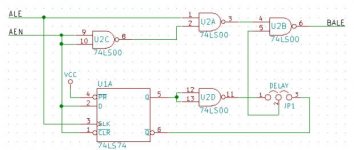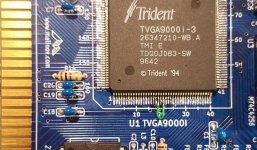sergey
Veteran Member
Hi, I just tried pulling RMD7 low with a soldered 10K resistor to ground on two different Sergey VGA cards that work OK in 16 bit bit systems. Neither card worked on a 5150 motherboard running the Anonymous Bios. BTW: Both cards still work on a 16 bit motherboard. Also, I tried a TSENG VGA card with ET4000AX in the same 8 bit system just to make sure the other parts of the setup were OK and the VGA output is working fine. My only caution is that it is REALLY hard to see and solder this pitch on a PCB, but the connections checked OK when probed with a meter.
Michael
Yes, tried the same yesterday evening, doesn't seem to help :-(


